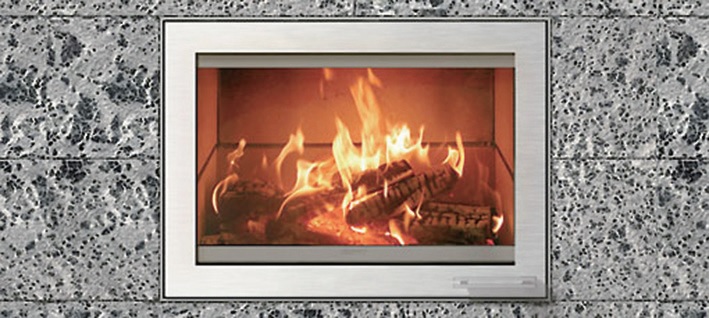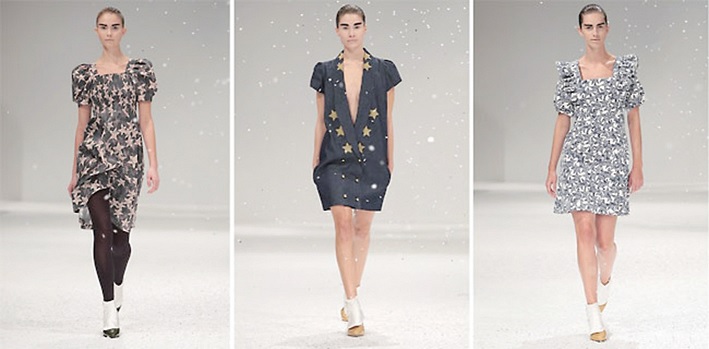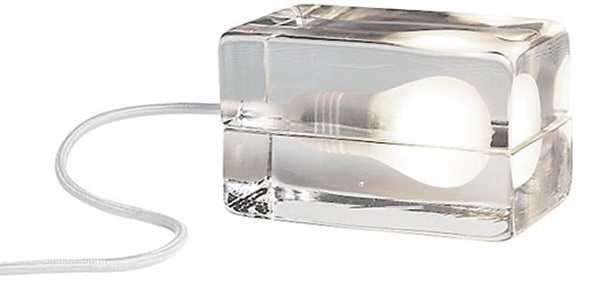芬蘭 – 設計的國度
芬蘭 – 設計的國度
Finland – The Design Nation
We Finns are on a first-name basis with design; it forms a familiar part of our daily lives. We are well acquainted with the design pedigrees of our kitchen cupboards, stocked with Arabia tableware and Iittala glassware that we use on a daily basis. Alvar Aalto’s Savoy vase is often placed on the table for special occasions.
Ever-present and authentic
Bold patterns and organic fabric designs by Marimekko. Marimekko introduces dozens of new fabric designs each year, and designers are not given any limitations beforehand. Instead, they are free to create and inject their own experiences and views of trends into the patterns.
Photo: Marimekko
Our surroundings are filled with design, from architecture and city planning to public transportation vehicles and sign systems. We decorate our homes with Marimekko textiles and Artek furniture; we wear designer clothes by IvanaHelsinki, Ril’s or Tiia Vanhatapio or leisurewear by Halti or Rukka. In Finland, design is ever-present, yet we typically notice it only when it’s lacking, making everyday life inconvenient.
We’re a true design nation, with a long history and a strong heritage in design. Finnish design has been promoted internationally since 1875, and the success of the Finnish design icons of the 1950s and ’60s has been passed on to innovative and eager generations of younger designers who work with internationally famous brands.
Recognition of the importance of design for Finland is both institutional and international: Helsinki School of Economics, Helsinki University of Technology and the University of Art and Design Helsinki merged into Aalto University, a new innovative force, in 2010. And in 2012, the Finnish capital was also World Design Capital. New ideas are emerging in the field, expanding towards marketing, communications, service, digital design and social media.
Design is a high-quality cultural export and represents an increasingly important competitive factor for Finnish products and companies that want to stand out internationally. Purity and authenticity in materials and products are the expectations at home and abroad, and form a good starting point for the future of Finnish design and industry. Come visit our cool northern land – and experience our warm passion for design. (AK)
World Design Capital Helsinki – Embedding Design in Life
In 2012, Helsinki was the World Design Capital. Helsinki‘s co-hosts were the cities of Espoo, Kauniainen, Vantaa and Lahti. The World Design Capital designation is awarded biennially to a city which commendably uses design as a resource for its social, financial and cultural development. The appointment is made by the International Council of Societies of Industrial Design (Icsid). Helsinki formed the third World Design Capital, succeeding Turin, Italy (2008) and Seoul, South Korea (2010).
The programme in 2012 consisted of some 300 projects, half of which are long-term development projects aiming to improve the conditions of cities for city-dwellers. “Embedding design in life” refers to expanding the realm of design from products to various systems and public services such as health care. Embedded design also emphasises paying attention to the needs of users from the very first stages of planning and design.
The programme involved a wide range of participants from ministries to universities, and from private companies to public museums. It increased the demand for Finnish design both in Finland and internationally, and improved the living environment for the residents of the cities involved.
Helsinki Design District forms a hub of creativity in the heart of Helsinki: just over one square kilometre with more than 180 design shops, galleries, workshops and trendy bars and restaurants, not to mention design hotels. Featured on a special Helsinki Design District map, this area also includes the Design Museum, the Museum of Finnish Architecture and Design Forum Finland.
Every autumn, Helsinki Design Week directs attention to the creative industries spreads new ideas and provokes discussion. Every spring, the Masters of Arts event organised by the University of Art and Design Helsinki showcases the merits of recent graduates. The Night of the Arts in late August brings the whole city out for performing arts, exhibitions, free concerts and more. (AV)

Design embedded in people’s lives is the overriding theme of Helsinki’s World Design Capital 2012 year and events. Helsinki approaches design from a broad perspective, and design underlies all processes that bring about social, economic and cultural improvement. People gathered for the WDC2012 video greeting in front of the Helsinki Cathedral.
© World Design Capital 2012 Helsinki
Finland’s design industry
Led by the designer Hannu Kähönen, Creadesign helped Tulikivi Corporation create a new series of fireplaces. The modern, clean-lined soapstone fireplaces use standard-size modular stones and meet the strictest particle emission standards.
Photo: Creadesign
Design Forum Finland promotes Finnish design in Finland and abroad. It arranges exhibitions, creates publications, runs the Design Forum Shop, distributes information and awards prizes. Design Forum Finland is maintained by the Finnish Society of Crafts and Design, which was founded in 1875 and forms the second-oldest design organisation in the world.
The Design Museum, previously the Museum of Art and Design, records the history of design, maintains a collection of objects and arranges a variety of exhibitions, some of which also tour internationally. The roots of the museum also reach back to the 1800s: the first objects for the collection were purchased in 1873. Today, it comprises 35,000 objects, 40,000 drawings and 100,000 images. The Arabia Museum in Helsinki, which focuses on ceramics, and the glass museums in Iittala and Nuutajärvi are also part of the Design Museum.
The Finnish Glass Museum, located 50 kilometres north of Helsinki in Riihimäki is a national specialist museum focusing on glass design and the history of the medium. Other museums that document Finnish handicrafts and applied art include the Craft Museum of Finland in Jyväskylä, 270 kilometres north of the capital, and the Alvar Aalto Museum, also in Jyväskylä. The famous architect and designer’s studio and house are located in Helsinki. Fiskars Village, a centre of art and design 100 kilometres west of Helsinki, also arranges exhibitions and events.
Finland boasts a large number of design-related educational institutions. The University of Art and Design Helsinki, established in 1871, is among the best design schools in Europe and one of the most respected in the world. Today, it is part of the new Aalto University. The University of Lapland’s Faculty of Art and Design forms the centre of design education in northern Finland. Among polytechnic-level schools, the best known is the Institute of Design in Lahti, 100 kilometres north of Helsinki.
The interests of Finnish designers are promoted by the Finnish Association of Designers, Ornamo, established in 1911. About 1,700 design professionals belong to Ornamo, including industrial and interior designers, craft and textile artists and fashion designers. Graphic designers have their own association, Grafia, established in 1933. (AV)

Hannu Kähönen
Photo: Liisa Valonen
Hannu Kähönen: Design heavyweight
Industrial designer Hannu Kähönen, appointed art professor by the Arts Council of Finland, is the founder and CEO of Creadesign. Kähönen is known for his versatility, ranging from strategic design to corporate identity and product design. He was awarded the Kaj Franck Design Prize by Design Forum Finland in 2009.
Kähönen’s works include Abloy locks and keys, Exel sports poles and Helsinki’s low-floor trams and buses. Kähönen likes to apply the design-for-all approach, which integrates accessibility and environmental considerations into the design process. How can we guarantee that seniors can live at home as long as possible? What kind of equipment is needed in home nursing services? High-quality design contributes to user safety and wellbeing.
For quite some time, Kähönen’s Creadesign has focused on design-oriented product concepts: future brands available for the industry to license. Key considerations include usability, collapsibility and recycling. One of Kähönen’s innovations is the 2F folding chair, made of birch plywood. It unfolds in both directions, with a different colour on each side. When folded, the chair is only 25 millimetres thick, and a hundred chairs only take one cubic metre of storage space.
Another innovation is the Klapi bridge, which can be bought by the metre and assembled on-site without special tools. Its construction is based on identical parts that can be assembled to the desired width or length. A Klapi bridge can made of stone, wood or plastic. This is truly environmentally sustainable design, which conserves materials by utilising recycled or locally available materials. (AK)
Finnish fashion: Original and yours
Alvar Aalto’s Aalto Vase, also known as the Savoy Vase, is a world-famous piece of glassware and an iconic work of Finnish design. The vase was designed as an entry in a design competition for the Karhula-Iittala glassworks factory in 1936 and will celebrate its 75th anniversary in 2011. (It became known as the Savoy vase because it was included in a design collection created by Alvar Aalto and Aino for the Savoy restaurant, which opened in 1937 in Helsinki.
Photo: Iittala/Arabia imagebank
Finnish fashion is known for quality and originality. Functionality and attention to Nordic weather conditions goes without saying, but Finnish designers also like to experiment, creating bold fashion beyond seasonal trends.
Finnish fashion is undergoing a fascinating transformation. During the past few years, a number of new designers have launched interesting collections, while established names – Vuokko Nurmesniemi, Jukka Rintala, Ritva-Liisa Pohjalainen and Ritva Falla, among others – continue to have a strong presence.
What contemporary Finnish fashion designers have in common is that their creations are not for the mainstream masses. Instead, they are designed for individuals with a strong sense of style, whether the focus is on environmental sustainability, street fashion or classic chic.

IVANAhelsinki emphasises ethical choices and manufactures its clothes in Finland. From left: Nelly, Paige and Reese show off items from the 2010 collection.
© IVANAhelsinki
Recycling forms a megatrend the moment; Globe Hope is a pioneering company on this front. Vintage treasures also serve as an inspiration for many designers and small brands. Designers favouring classicism include Anna Ruohonen, based in Paris; sisters Päivi and Anna Haaksiluoto; Naoto Niidome, with his exclusive collection; and Anssi Tuupainen, who focuses on men’s fashion. Distinctive, idiosyncratic styles have been created by siblings Tuomas and Anna Laitinen; the Rinne Niinikoski duo; street fashion wizard Daniel Palillo; Hanna Sarén; Tiia Vanhatapio; Paola Suhonen’s IVANA Helsinki; and Mika Piirainen of Marimekko.
A number of designers focus on shoes and accessories. Janne Lax values the tradition of handicraft in his St Vacant shoes. Based in London, Julia Lundsten is an internationally recognised shoe designer who received the Young Designer of the Year Award from Design Forum Finland in 2007. Minna Parikka is famous for her shoes and bags radiating 1950s glamour. Sanna Kantola and Bruno Beaugrand design bags and accessories for their Lumi Accessories; Virva Launo revamped the bag collection of Marimekko. Ville Lehtinen creates hand-crocheted headgear and bags for his Outo Wear. The cravats, chokers, collars and neckpieces designed by Jenni Ahtiainen for her gTIE collection represent something you do not see every day. (AV)
Paola Suhonen: Ethical and ecological choices
Finnish fashion brand and a family business IVANAhelsinki, run by fashion designer Paola Ivana Suhonen and marketed by her sister Pirjo, forms an insightful mix of Slavic melancholy, romantic folklore, the reductivist Scandinavian formal idiom, effective print patterns and respect for tradition.

Paola Suhonen
© IVANAhelsinki
IVANAhelsinki emphasises ethical and ecological choices. The hand-crafted clothes and accessories are manufactured in Finland as atelier pieces out of natural materials. IVANAhelsinki was also the first in a new wave of Finnish fashion brands to be seen on the catwalks of Paris fashion week, in 2007. In 2011, the label became the first Finnish fashion house ever to participate with its own runway show in New York’s Mercedes Benz Fashion Week. Original, powerful and graphic visual and photographic expression has been Paola Suhonen’s trademark as a designer. (AK)
Applied art and industrial design
The impossible made real: Harri Koskinen’s prize-winning Block Lamp, resembling a light inside an ice cube, became an instant design classic upon its release in 1996. New York’s Museum of Modern Art added the piece to its collection in 2000.
Photo: Iittala/Arabia imagebank
Finnish applied art is rooted in a strong vernacular tradition and culture of objects. The active role taken by the Finnish Society of Crafts and Design (founded in 1875) has provided a basis for education and international activities at World’s Fairs and major competitions.
Well-known examples include World’s Fairs during the 1930s, which made Alvar Aalto a household name in the international media; and the triumphs at the Milan Triennale in the 1950s and 1960s, which made national icons out of such designers as Tapio Wirkkala, Timo Sarpaneva, Antti Nurmesniemi and Nanny Still. Glass design has gained particular international acclaim; today, the tradition is cherished by such companies as Iittala.
Times and needs have changed in 50 years, but remembering this unique history makes it easier to understand why the Finns still have such a close relationship with design. In the greater Helsinki area alone there are approximately 10,000 design professionals, and the number of design-intensive companies is 110,000 to 200,000, depending on the definition.
Industrial design plays an inconspicuous but omnipresent role in our daily lives. Someone has designed the mobile phones and lifts we use and the public transport signs we see. The challenges faced by designers in the future will not only be related to sustainable development but also to service design.
Leading industrial design trendsetters in Finland include Nokia, Kone, Metso, Fiskars, Iittala, Rocla, Suunto and Vaisala. Companies increasingly integrate design into their operations, something which is recognised through the most important design competition in Finland, the biennial Fennia Prize. There are active industrial design agencies, such as Creadesign, ED-Design, Linja-design and Muotohiomo, and active in-house teams, such as the staff at Palodex, Rocla and Suunto.
Prizes and awards help make industrial designers better known – otherwise they tend to remain anonymous. Examples include Hannu Kähönen, art professor and winner of the 2009 Kaj Franck Design Award; and Arni Aromaa and Sauli Suomela from Pentagon Design, who are the 2010 Industrial Designers of the Year selected by the Finnish Association of Designers, Ornamo.
Crafts and applied art also possess a respected heritage in Finland. Artistic experimentation is often an important phase preceding industrial innovation and serial production. Finnish ceramics and glass art have a strong contemporary presence. Ceramists include Kirsi Kivivirta, Nathalie Lahdenmäki, Heini Riitahuhta and Kim Simonsson, while glass designers include Anu Penttinen, Harri Koskinen, Markku Salo and Oiva Toikka.
A dynamic group of ceramists works as part of the Arabia Art Department Society, and the legendary glass-blowing villages of Nuutajärvi (1793) and Iittala (1881) still produce both hand-blown items and glassware for daily use. In addition, there are numerous small design workshops all around Finland, all the way to northernmost Lapland.
Adherence to local tradition and dedication to materials is typical of craft professionals, such as those in Ornamo and the Finnish Association of Artists and Designers, TAIKO. Young designers in particular have sought bold new dimensions while preserving tradition; examples include MIE, a group of textile artists based in Rovaniemi, and designer groups such as Anteeksi and Design Migration. Strongly rooted in their own culture, Finnish designers of all ages actively seek new influences and frequently participate in international arenas such as the design weeks in Tokyo and New York. (AK)
World citizen of design: Harri Koskinen
Harri Koskinen, industrial designer and founder of Friends of Industry Ltd, is known for the streamlined products he has designed for global brands such as Issey Miyake, Magis, Montina, Venini, Oluce and Design House Stockholm. One of his earliest products, the Block lamp (1996), is included in the MoMA collection in New York. The Muu chair for Montina earned Koskinen the Italian 2004 Compasso D’Oro award, while a subwoofer Koskinen designed for Genelec won the 2009 Fennia Prize Grand Prix, Finland’s biggest design award. In November 2009, Koskinen received the world’s largest design prize, the Torsten and Wanja Söderberg Award, worth one million Swedish crowns, for his achievements in design.

Harri Koskinen
Photo: Iittala/Arabia imagebank
Who is the man, the designer behind all of these accomplishments? Harri Koskinen’s roots lie deep in the central Finnish countryside, in a place called Karstula. As a student at the Lahti Institute of Design, he won his first design competition and began working as a summer intern in 1996 in the village of Nuutajärvi, known for its glassworks. This marked the beginning of his cooperation with the Finnish company Iittala. His latest collection of blown glass pieces, Artworks, was presented at London 100% Design in September and at Tokyo Design Week 2009. But glass is just the tip of the iceberg. Productive and versatile, Koskinen also challenges himself with plastic, steel and textiles, such as his prize-winning prints for Marimekko, which are also produced as wallpaper. Koskinen’s signature is unique, functional and often minimalist design – everyday aesthetics at their best, always including a touch of timeless elegance. (AK)
Commercial art and graphic design
Janine Rewell is one of the many exciting young Finnish graphic designers from the illustration agency Agent Pekka. Created for Atria, the design is called “A feel-good pattern”.
Photo: Agent Pekka
Finland is experiencing a boom in graphic design. Illustration, typeface design, digital environments and corporate identities are strong areas. Graphic design is easy to promote on the internet: websites and blogs allow agencies to reach worldwide audiences. Many Finnish graphic designers are based abroad.
The Finnish style, which often combines both Eastern and Western cultural heritage, has made a breakthrough. Rich in fantasy and decorative detail, the illustrations of Klaus Haapaniemi have gained wide international acclaim; the same goes for Sanna Annukka, which hark back to the Finnish epic Kalevala and Finnish folklore. Kustaa Saksi, based in Amsterdam, and Pietari Posti, based in Barcelona, are both masters of strong line and bold colour. Sami Kortemäki is known as one of the founders of typeface design specialists Underware. Illustration agency Agent Pekka boasts many of the hot names of Finnish graphic design.
High-quality commercial art names include Dog Design and Hahmo Design, which focuses on corporate identities. Tango Helsinki ranges from packaging design to brand identity and strategic design. Teemu Suviala’s and Antti Hinkula’s Kokoro&Moi attracts clients from both Finland and overseas. (AV)
The game is on
Alan Wake is a psychological thriller action-adventure video game developed by Remedy Entertainment and published by Microsoft Game Studios exclusively for Xbox 360.
The history of the Finnish gaming industry is brief but impressive. The first Finnish gaming companies sprung up during the 1990s, and the majority of existing companies weren’t founded until after 2000. At this moment, there are currently more than 50 companies in Finland actively involved in game development; industry turnover for 2008 was approximately 87 million euros.
Talented designers in the field are continuously generating unique innovations. Past international breakthroughs range from action games such as Remedy Enterprise’s Max Payne series to interactive gaming such as Habbo Hotel from Sulake. Finns are also known worldwide for their expertise in 3D graphics.
The gaming classics of the future are being designed right now. There’s constant industry speculation about where the next Finnish classic will originate. In addition to the aforementioned companies, others to keep an eye on include Bugbear, Digital Chocolate, Frozen Byte, Housemarque, Mr Goodliving, RedLynx, Rovio Mobile (of Angry Birds fame) and Sula Labs.

Habbo Hotel by Sulake Corporation is the world’s largest virtual community for teenagers. Localised Habbo communities all around the world are visited by millions of teenagers every week.
© Habbo Hotel
Finland is also home to Nokia, of course, and mobile games make up almost as much of the total gaming industry production as PC and console games. Online games have a smaller market share but are coming on strong. Most importantly, the gaming industry and its various sub-fields are an important segment of Finland’s growing service design sector.
For instance, the Finnish Funding Agency for Technology and Innovation Tekes supports the product development activities of innovative companies, including those in the gaming industry, while Neogames organises training, research, international networking and communications. (AK)
Strong profile in furniture
Eero Aarnio designed the Ball Chair in 1963. It was presented at the international furniture fair in Cologne in 1966. It was the sensation of the fair, the international breakthrough for Eero Aarnio and the start of a whole line of fibreglass designs by Aarnio. The more recent versions include additional features such as music and MP3 player integration.
Photo: Design Eero Aarnio
Furniture is one of Finnish design’s strongest sectors: Eero Aarnio’s Ball and Pastil chairs and Alvar Aalto’s three-legged stool and Paimio chair form icons that have represented Finland internationally. The strengths of Finnish design are clearly visible in furniture design: knowledge of material, functionalism and a clear formal language. Aalto’s designs from the 1930s are still relevant and furniture designed by Ilmari Tapiovaara and others in the 1950s and ’60s is in production again.
But Finland also boasts a new generation of gifted designers who are creating 21st-century furniture: Timo Ripatti, Antti Kotilainen, Mikko Laakkonen, Ilkka Suppanen and Terhi Tuominen, to name a few. Harri Koskinen’s Muu chair was awarded the prestigious Compasso d’Oro a few years ago.
Wood continues to be an important material, and technical innovations have generated new possibilities for structure and form. Plywood can be pressed and bent in new ways. Structures constructed of thin ply, such as Jouko Kärkkäinen’s acoustic wall elements, are solid yet almost translucent. Through heat treatment, Finnish woods can become hardened and moisture-resistant.
Environmental aspects now form considerations in furniture design. Materials are sourced locally, there’s an effort to manage production ecologically and product life-cycle is taken into account. Durat, a material made of recycled plastic, is suitable for use in sheet-type structures, such as Eeva Lithovius’s tables and benches. Rapidly growing bamboo has claimed a place along local wood. An extreme example of environmental design is Samuli Naamanka’s Compos chair: the seat is 100 percent biodegradable natural fibre polymerized from linen and corn sugar and the leg structure is reusable steel. (AV)
Eero Aarnio – master of forms
Eero Aarnio (born 1932) is one of Finland’s most famous working designers. Everyone remembers the Ball chair, the Pastil chair, and the Puppy chair – strong forms, powerful colours, fibreglass, acrylic, original ideas. The Ball chair, which appeared in 1963, became Aarnio’s first international success. He garnered significant attention in 2008, receiving the Kaj Franck Design Prize in Finland and the Compasso d’Oro in Italy. He was the third Finn ever to receive the Italian prize.
At first glance, Aarnio’s products do not conform to the typical characteristics of Scandinavian design: they are unusually rich in form, colour and surprise. But behind them lie solid Scandinavian functionality and practicality. The shape of the Pastil is excellent for sitting. And the Bubble chair is manufactured like a soap bubble, by blowing – ingeniously simple. Form and material go hand in hand: the material – wood, plastic, acrylic, fibreglass – makes the form possible, while the form dictates which material can be used in its manufacture.
Aarnio continues to be full of ideas in his senior years. His design process is rapid, generating new products for every exhibit. In recent years, Aarnio has focused on lighting design, bringing surprising new innovations to the field through his ideas about form. Aarnio knows the ins and outs of manufacturing techniques, especially working plastic, and understands how to make a product as cost-effectively as possible – without, of course, sacrificing quality or form. (AV)
By Aila Kolehmainen and Anne Veinola, 2010, updated January 2014
Remark: Article from Consulate General of Finland in Hong Kong SAR





